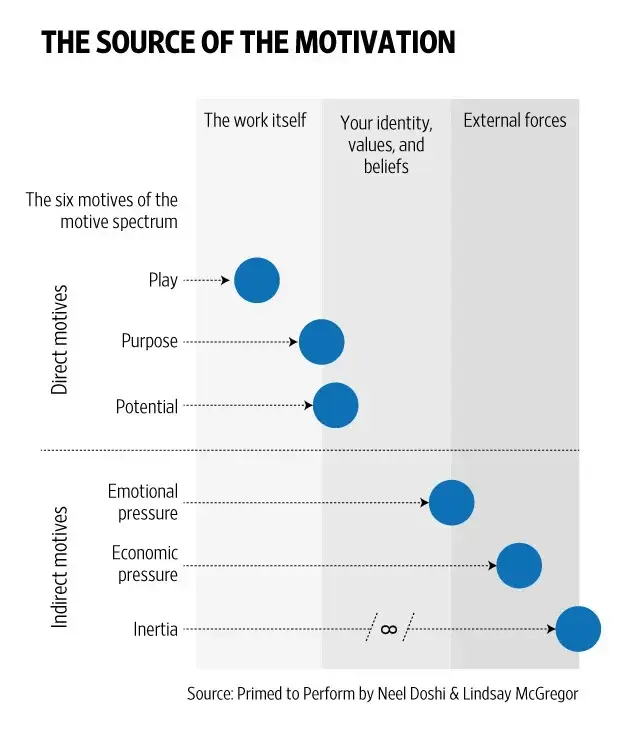It’s an exciting time for your company—you’re growing rapidly and have seen a significant boost in sales, revenue, and company reputation. But you also notice that your employees don’t seem as excited about these advancements as you are. In fact, they seem less motivated than ever before.
Believe it or not, this is a common challenge that many companies face when they experience a period of rapid growth. While this newfound success can feel like an all-encompassing thrill, it is critical that you keep the most important asset of your organization at the top of mind— your people.
There is a quote by Akio Toyoda, President and CEO of Toyota Motor Corporation, that highlights the importance of this: “Trouble results when the speed of growth exceeds the speed of nurturing human resources. To use the analogy of growth rings in a tree, when unusually rapid growth causes the rings to grow abnormally thick, the tree trunk weakens and is easily broken.”
In order to maintain the momentum of your growing company, you have to ensure your teams remain energized and enthusiastic about helping you get to the next level. After all, they are the ones who are on the front lines helping you get there. These five tips will help keep your teams strong and your business fortified during times of rapid growth and change.
Follow the Three C's
As your company grows, there will inevitably be major cultural and organizational changes that you’ll have to implement. However, despite how different your work environment may become, you can much more easily keep everyone on an even keel by focusing on the three C’s:
- Communication
- Collaboration
- Continuous Improvement
Keep open channels of communication available throughout your company by making sure you update everyone about any changes in policies or procedures within the company before they take effect. You’ll quickly build trust with your teams if they feel they are in the loop as changes come down the pipeline.
You’ll also want to ask for input and give all departments a platform to address leadership. For example, if you plan to introduce an entirely new process into the organization, run it by the people on your teams first. You’ll get a feel for how the change might influence your teams as well as receive valuable feedback that can help you improve and refine the plan if needed. Actively prioritizing collaboration and communication at your company helps reinforce the concept that amazing teams are more important than individual superstars.
Once you establish methods to encourage communication and collaboration among your teams, it will be much easier for you to talk about any successes or challenges your organization may be facing. These open and honest conversations provide the framework needed to build a culture that values continuous improvement. This is critical during a period of rapid growth as it will help you learn from your mistakes and keep everyone humble.
While it will be important for upper management to assess the company’s progress during growth, some of the best feedback you’ll get in regard to what’s working (and what might not be) will come from the individuals on your teams.
A great way to solicit this feedback is to hold quarterly town hall meetings. These meetings will serve as a safe environment for the people in your organization to express any concerns they may have about current policies as well as share their ideas on how they can be improved. Be sure to spend most of the time listening—you want to ensure everyone has the opportunity to voice their opinions. These conversations may be tough, but they will empower your team to work together to come up with even better solutions.
Focus on Employee Engagement
A recent study found that 51% of employees are not engaged in their place of employment and 16% are actively disengaged—in other words, unhappy and costing you productivity. Unfortunately, companies that experience periods of rapid growth are some of most susceptible to culture issues and a disengaged workforce. It can be easy for employees to feel disengaged with their day-to-day responsibilities, as well as the company's mission and values, if too much changes at once or if they feel disconnected from the overarching goals of the organization.
So how can you encourage your growing team to work hard, stay motivated, and remain engaged with your company? It starts with restructuring the way you motivate your employees. Traditionally, compensation and vertical career growth were thought to be the two primary motivators that would drive an employee to perform at their best. While they may seem to work in the short term, research indicates that they actually have negative effects on the long term productivity and success of a company. People who are given the wrong incentives will find ways to personally win rather than come up with innovative ways to help the company win.
In the book Primed to Perform: How to Build the Highest Performing Cultures Through the Science of Total Motivation, authors Neel Doshi & Lindsay McGregor explain the six sources of motivation:

Play is the most powerful motivator and is measured by the joy you get from the work itself. For example, a successful graphic designer will most likely enjoy the process of designing and creating a new illustration for a book.
Birkman Interests are derived from the powerful Birkman Method assessment and measure "Play" in a similar way. Interests denote the types of activities you enjoy doing both in and out of work, and tend to remain relatively consistent over time. In other words, the activities you enjoy doing now you most likely also enjoyed as a kid. Aligning your Birkman Interests with your career can have profound impacts on how satisfied and successful you are in your role.
Purpose is when the outcome of your work is the reason why you do it. For example, a school guidance counselor may be motivated to perform at their best because they feel they are making a difference in the lives of children.
Birkman Interests also relate to "purpose" as they indicate how a person prioritizes the activities they participate in throughout the day. People tend to be more motivated to do and think about the things they enjoy and value first over the things they are less interested in. In other words, the reason why we choose to do things over others is because we simply enjoy doing them.
Potential is when the work enables a future outcome aligned to personal goals. For example, someone may be motivated to perform well in an entry-level job because they want to learn the skills necessary to manage their own company in the future.
The research in this book indicates that "the why you work determines how well you work." In other words, if an employee enjoys their day-to-day responsibilities, believes in the overarching goals of the company, and is inspired by the work they do, they will be motivated to perform at their best.
A growing company is able to capitalize on these direct motivators by being transparent about the future strategy and direction of the organization. Chances are, as your company is growing, your overall profit and revenue should be growing as well. Be sure to spend time celebrating these wins as a group and recognize your employees for a job well done. The personal satisfaction that comes from bringing your organization success will work to fulfill their purpose/potential motivators. Growing companies also have plenty of job opportunities, so see if your current employees are in the right roles or may benefit from moving with the organization.
Additionally, you'll want to carry this excitement over to any new hires you make. Create a company-wide mission statement that you can share with candidates. This can help you gauge how aligned a candidate's personal beliefs and values are with the organization's. Chances are, if they bought-in to the goals your organization is trying to achieve, they will do amazing things for your company!
Give Your Team What It Needs
A growing company also means a bigger workload, and this could mean the people in your organization are getting pulled in several different directions throughout the day. No matter how great your team may be, they need adequate resources to keep up with this growing demand. You can help lighten the load for existing team members with things like temporary help, overtime bonuses, or the option of accessing outside vendors for administrative tasks like answering the phones or for specialized projects. This will not only ensure your teams are able to stay energized and productive during the day, but will also help keep burnout at bay.
In-house training should also be on the “must-have” resource list. You want to make sure everyone has the technical knowledge and communication savvy necessary to perform at their best—especially during change and disruption. For example, if you are introducing new software, make sure you take the time to train everyone on how to use it. Remember, communication is the key to keeping your teams intact!
In addition to giving your existing teams what they currently need, anticipate potential needs down the line. You can help to mitigate future problems if you take a moment to develop a strategy that covers increasing resources, overcomes potential roadblocks, and addresses future needs as they emerge from your growth.
Have the Right Team
When your company is experiencing rapid growth, you’ll also likely feel pressure to build your teams—and quickly! As tempting as it may be, try to hold off on the urge to settle on a non-ideal candidate during the hiring process.
While adding new members to your team will ensure you have the additional bandwidth to facilitate future growth, you must also delicately balance this need with maintaining a cohesive culture. Approach all of your hiring decisions with the mindset of preserving the very things that made your company successful in the first place—your existing teams, culture, and values.
Recruiting, onboarding, and maintaining the best talent you can find is going to be one of the most important aspects of maintaining the integrity of your organization. A personality assessment can be a great tool in the hiring process as it will give a feel for how the candidate may fit in with the existing team, how their individual strengths can help enhance the growth of your organization, and how passionate they will be about their day-to-day responsibilities.
Additionally, you can continue to keep the three C’s in mind by including your current team members in the hiring process. Give them the opportunity to ask candidates questions during the interview. This gives your team the unique, first-hand perspective to see how they might fit in with the team. Additionally, you’ll build trust with existing team members if they feel they have a say in who is being added to the group.
Read More: The Benefits of Using a Personality Assessment in the Hiring Process
You’ll also need to make sure current employees are in positions that are best suited for their abilities and skills. Your existing sales manager, for instance, may be comfortable handling a team of two associates—but not 22. Look to promote from within if you have strong team players who have the qualities required to become even stronger team leaders.
Whether you’re looking inside or outside your company, you want to target team members who will be adaptable, enthusiastic, and able to stretch their skills to meet ongoing, rapidly changing, and growing demands. As part of your corporate team building efforts, empower leaders to make decisions and engage in their own team development strategies with their teams.
Keep Company Culture Intact
Even though your company's processes, procedures, and team member responsibilities may change, there is one thing you must keep strongly intact no matter what: your company culture. Retaining company values, ethics, and empowered team members needs to be a priority throughout every stage of growth and will be a key element in building a concrete foundation for your company to build upon.
Read More: Building a Company Culture People Love to Work for
One way you can work to preserve your culture is to keep company traditions alive regardless of how large your organization gets. These traditions are what makes your company unique and distinguishes your culture from others. For example, if you had previously celebrated birthdays or holidays together as a team, continue to do so as you grow. Not only will this give your teams another opportunity to collaborate with one another, your veteran employees will also appreciate this small gesture to keep your traditions in tact.
Also, make sure you continue to personally recognize each employee's contributions to the team. As a small company, it is relatively easy for a manager to give individual, personalized congratulations for a job well done. However, as teams grow larger and responsibilities become greater, each employee's individual contributions may become harder to track and recognize.
To help overcome this, schedule short, one-on-one meetings with each member on your team. These meetings can serve as an opportunity to check-in with each person on your team, identify what they are working on, and help you more easily assess when someone has done a job well. This only takes a small time commitment from you, but these small tokens of appreciation can go a long way.
A period of rapid growth can be an exhilarating time for your company, but can also present many challenges if you don't remain focused on your organization's most important asset—your people. Keeping these five tips in mind will help you nurture your human capital, while building a solid foundation for your company to grow on for years to come.
Reaching Further: When MailChimp was experiencing rapid growth in 2013, the company turned to The Birkman Method to preserve and enrich its company culture. Individual assessments, coupled with annual team building activities, have played a notable role in helping to retain MailChimp’s unique culture.
Individual assessments of all employees help them better understand their individual strengths, work across differences, engage in more meaningful conversations, and continue to collaborate effectively. As a tool for more deeply understanding themselves and their coworkers, Birkman was able to help cultivate a self-reflective, authentic, and highly productive workplace.
The mutual understanding, self-awareness, and open communication Birkman provides serves as a foundation for strengthening company culture—even in the face of rapid growth and enormous change.

